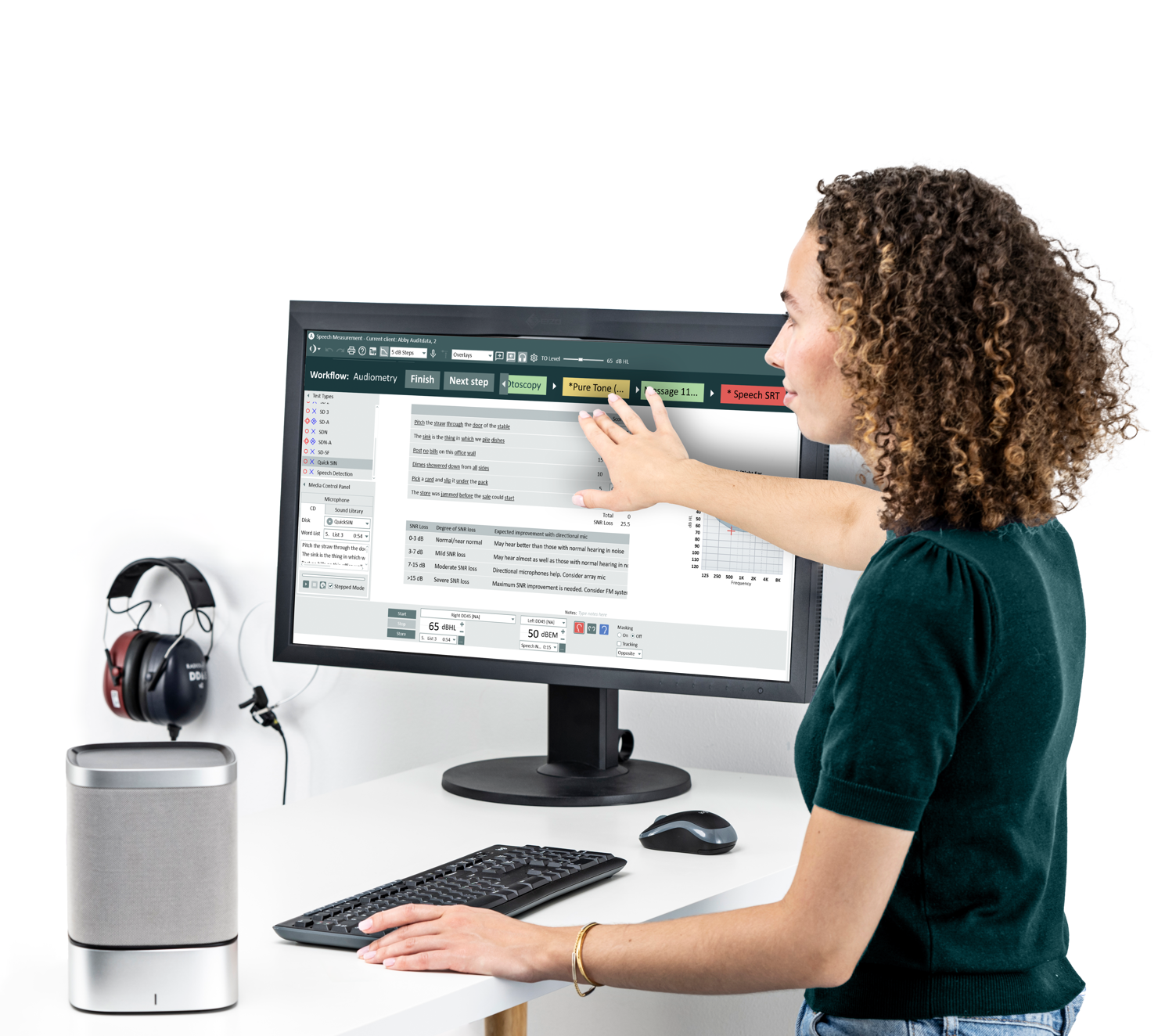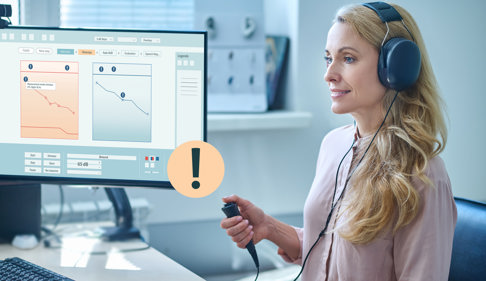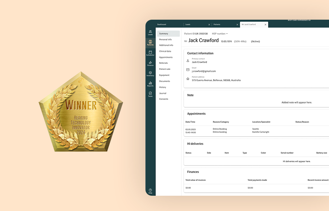
Being successful in hearing care retail is all about striking the right balance between clinical quality, customer care, operational costs, and revenue streams, which can be challenging.
Looking at hearing care through the retail lens, commercial workflows should ensure sound logistics, easy purchasing, and high-quality customer care. However, through the medical lens, clinical workflows must also offer best practice hearing care. All medical procedures should have distinct workflows that deliver the highest quality care to the client, while boosting the hearing care providers’ efficiency, productivity, and conversion rates. Understanding these two perspectives shows how vital it is to interlink clinical and commercial workflows to provide the most extraordinary customer service and care while maximizing KPIs for the business.
This blog outlines 3 top challenges for hearing care retailers and offers suggestions on how to overcome these issues using integrated clinical workflows.
3 Common Challenges And How to Overcome Them
1. Training Staff and Implementing Changes
For heads of audiology around the world, it is challenging to streamline and educate audiologists and audiologists in clinical processes and workflows. Employee turnover is often high, which requires constant onboarding of new staff. In many countries, there is a lack of educated, experienced audiologists, which means retailers often educate their own staff or acquire newly graduated audiologists straight out of school. Training new staff is extremely demanding, requiring significant resources to get them up to speed both clinically and commercially.
Another challenge is that hearing aid suppliers regularly upgrade their fitting software and include new features and functionality for end-users. Additionally, governments and insurance companies pose an increasing number of requirements for retrieving reimbursement for hearing aids sold. This means that even well-integrated staff need ongoing training and upgrading of their skills to stay current.
Clinic owners and heads of audiology work very hard to make sure that all employees are well-educated, ready to sell the newest technology, and comply with the latest legislation. However, this ongoing training is extremely time-consuming, and you never know if the staff is performing as they have been taught.
How to Overcome This Challenge:
Establish standardized workflows for hearing care retailers that include clinical protocols to maximize sales opportunities while delivering best practice hearing care. Workflows will also ensure that staff manage their legal or regulatory requirements while working within a consultation process to enhance speed and accuracy of the operation.
1/3
2. Auditing And Accessing Data Is Challenging
When the audiologists have been trained, it’s difficult to know if they perform as instructed in their hearing clinics. Depending on the size of the clinics, auditing staff is a challenge. Smaller chains have an advantage here.
Auditing and analyzing data is difficult, but necessary. Without this critical information, clinic owners often have little insight into:
- Which tasks are being executed? Unless you standardize workflows and data, audiologists may operate on gut-feeling when working with clients. You’ll have no idea which procedures were conducted, why an audiologist made specific recommendations, or how much time was spent on each task. It also means that you, as a clinic owner, do not have an accurate idea of each client’s experience and whether the appointment outcome was as good as it could have been. This makes it difficult to understand the overall experience and verify the processes needed to receive reimbursements.
- What actually works? It’s nearly impossible to benchmark staff performance, ensure that staff understand best practices, and roll-out data-driven improvement programs when you operate without any determined standard. It’s unproductive to try and find pockets of excellence in your operation and copy that to the rest of the organization. It’s far more effective to set workflows and standards for everyone to follow.
- How is each individual audiologist performing? Rating the audiologists will often be focused on things that can be measured, such as revenue levels, ASPs, and conversion rates. But there is much more to hearing care. There are many intangibles that are harder to quantify, such as how well they fit clients’ devices and whether they followed clinic procedures. It’s also difficult to determine whether an audiologist is “just lucky” to have many repeat clients, which means their numbers will squeue performance ratings to seem higher than they are.
Some hearing care businesses have set procedures and regularly analyze process outcomes but, unfortunately, this strategy is not widespread.
How to Overcome This Challenge:
Private hearing care clinics need to implement a system that allows and automates central control and clinical workflow design so their staff can follow it without hesitation. The system should allow for the in-depth measurement of process compliance to determine how those processes are impacting KPIs for each audiologist. Additionally, it should provide accurate information regarding local requirements for reimbursement.
3. Efficiency And Complexity of Processes
Running an efficient business can be a challenge. There are multiple processes for both commercial and clinical; payment, HR, and more, that regularly occur in the clinics. The most crucial process is the customer journey: the in-clinic experience from first handshake to a satisfied customer walking out of the clinic with a pair of well fitted hearing aids. Download our guide about how to convert leads to paying hearing aid users. The customer journey includes both the sales process and the clinical process, both of which, if done correctly, will add up to an extraordinary customer experience and an increased conversion rate. Clinical and sales processes are not the same. "The clinical process is an integral part of the sales process. If we do our job well and the client hears well, they will buy the hearing aids. So, we feel the clinical process is as important as the sales process, and we need to balance the two." Lore Heylen from HooerCentrum Aerts.
Aligning a standardized customer journey using workflows is the goal, but it’s also important to remember that each client is different and has unique challenges and needs. This means clinics must create standards to follow, but also provide individualized service. Many audiologists tend to go to autopilot when they meet a client and then deliver the same service to all clients. This is not always in the client’s best interest and may not result in the most appropriate treatment for their specific needs. Therefore, implement a standard but allow for customization of treatments and solutions to ensure the highest client satisfaction rate and efficiency levels.
"While most hearing clinics have some kind of workflow, they tend to focus on sales. They don't necessarily focus on the audiological side. Initially, we enabled the clinical workflows in one hearing clinic as a trial. We quickly saw the benefits for the company, and we enabled workflows across all of our other clinics." Lore Heylen from HooerCentrum Aerts.
1/3
How To Overcome This Challenge:
Automating these workflows and integrating them into the practice management software is a great way to implement, track, and optimize processes. "Before we started with Measure workflows, we had our clinical workflows detailed on paper, and we trained with those procedures. But having the workflow in our Measure software is such an improvement for us. Another benefit for clients is that no matter which outlet they go to, they will receive the same high-quality care." Lore Heylen from HooerCentrum Aerts.
In conclusion, it’s in a clinic’s best interests to set structure and standards around workflows. By doing so, they’ll boost efficiency, productivity, and conversion rates. They’ll also have a better, more holistic view of key performance data to help ensure best practices are being followed every day, with every client. This will elevate both the client experience and KPIs, which is a benefit for all parties.
Other Blogs You Might Enjoy:

Excel in Your Hearing Business With Nudging
Nudging helps by guiding hearing care providers through complex decisions, focusing more on the client and less on the workflow and process, helping hearing centers enhance clinical quality and ensure best practice testing processes are consistently followed.

Improving Satisfaction Rates for Hearing Aid Users
Learn how to guide your customer hearing aid experience through the initial follow up period and beyond to ensure that customers remain satisfied.

4 Crucial Conversion Rates To Improve in Hearing Care
In private hearing care, there is often a discussion about how to increase conversion rates, or help rates as some prefer to call it. Many audiologists are measured on clinic performance, conversion rates, and sales, and are rewarded according to these KPIs.
Don't Miss Out On the Latest Insights On Audiology
Sign up today to receive exciting updates, tips, and the latest newsletters from Auditdata.







